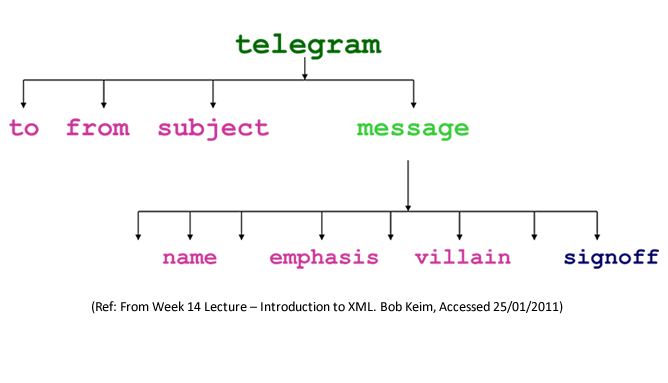XML stands for Extensible Markup Language and it is a unique metadata language that is used to provide a more intuitive and organised structure to any type of written data. XML was developed and created by W3C – The World Wide Web Consortium.
The World Wide Web Consortium (W3C) is an organised community composed of organisation members, full time staff and the general public that work and develop web software.
The reason why XML is easy, useful and intuitive is because it allows the coder to use any tags they can think of or desire. XML has no standard tags which allows a lot of flexibility and makes it easier for newcomers to learn and develop the language. Despite the flexibility, there some rules that must be followed when using a XML language. The first rule is that for any document, it must begin with a XML Declaration, which is: < ?xml version="1.0"? >. The second rule is that the starting and ending tags must match each other in spelling and case-sensitivity e.g. < module > < /module >. The third and final rule is that all tags must be enclosed within opposite arrow heads e.g. < ... > , and closed e.g. < / > .
Below is an example of information written in XML:–

The image below is a XML tree, based on the XML example above. The purpose of a XML tree is to show the structure and direction of where the information is directed to. It also shows the hierarchy of tags enclosed within the data.

• Snyder, L. (2010). Chapter 16 – Introduction to Database Concepts. Fluency with Information Technology: Skills, Concepts and Capabilities. 4th Edition. Harlow, Essex: Pearson Education, pp. 492-498.
• Snyder, L. (2010). Glossary. Fluency with Information Technology: Skills, Concepts and Capabilities. 4th Edition. Harlow, Essex: Pearson Education, pp. 786.
• The World Wide Web Consortium (W3C) (2011). About W3C [Online]. Available from: http://www.w3.org/Consortium/ [Accessed 21 March 2011].
• Keim, B. (2011). Introduction to XML. [Presentation to Business IT and IT, The University of Kent]. 25th January 2011.